In the dynamic landscape of the transportation industry, the design of tractor trailers plays a pivotal role in ensuring efficiency, safety, and reliability. At CarMax Vehicle, we pride ourselves on pioneering cutting-edge tractor trailer designs that meet the evolving demands of modern logistics. This guide delves into the intricacies of tractor trailer design, exploring essential components, innovative technologies, customization options, and future trends that shape the industry.
Key Components of Tractor Trailer Design
Understanding the fundamental elements of tractor trailer design is crucial for optimizing performance and longevity. The primary components include:
1. Tractor Unit
The tractor, often referred to as the truck, is the powerhouse of the tractor trailer combination. Key aspects include:
- Engine Performance: High horsepower engines ensure the necessary torque for hauling heavy loads.
- Transmission Systems: Advanced transmissions facilitate smooth gear shifts and fuel efficiency.
- Chassis Design: A robust chassis provides the structural integrity required for varied terrains and load conditions.
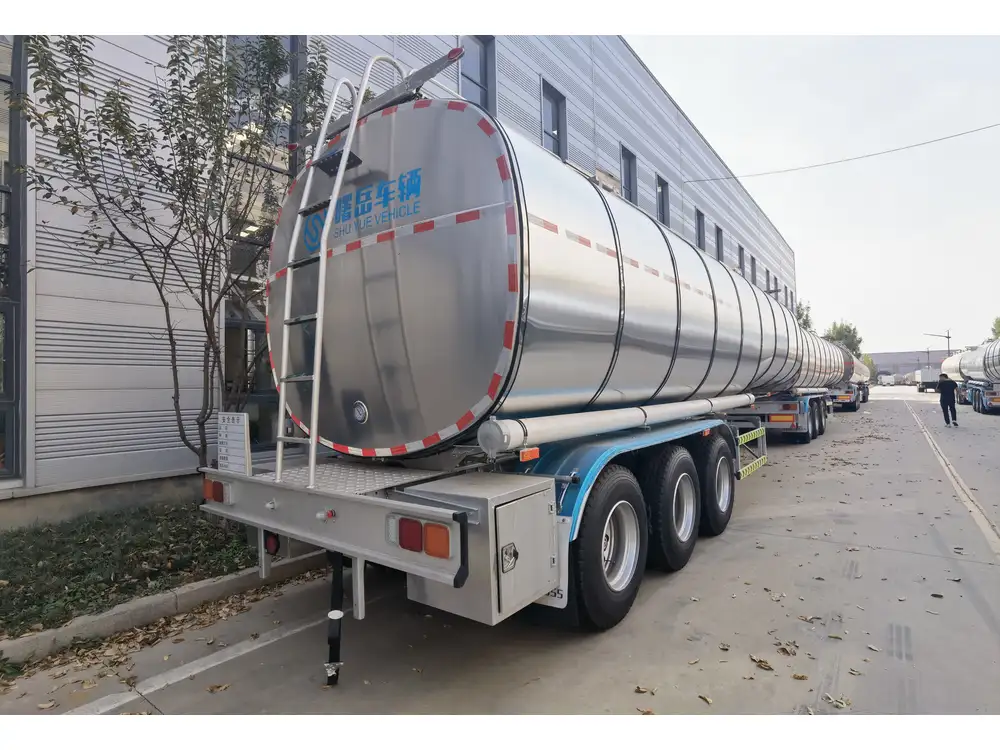
2. Trailer Design
The trailer is the cargo-carrying counterpart to the tractor. Its design considerations encompass:
- Axle Configuration: Determines load distribution and stability.
- Suspension Systems: Enhances ride comfort and reduces wear and tear.
- Cargo Space Optimization: Maximizes storage capacity while maintaining maneuverability.
3. Coupling Mechanisms
Efficient coupling systems are vital for secure and seamless connections between the tractor and trailer. Features include:
- Fifth Wheel Design: Ensures stable hitching and easy coupling/decoupling processes.
- Safety Locks: Prevent accidental disconnections during transit.
4. Aerodynamics
Aerodynamic design reduces drag, enhancing fuel efficiency and speed. Elements involve:
- Fairings and Skirts: Streamline airflow around the trailer.
- Roof Spoilers: Minimize turbulence and improve stability.

5. Safety Features
Safety is paramount in tractor trailer design. Critical safety components include:
- Brake Systems: Advanced braking mechanisms ensure responsive and reliable stopping.
- Lighting Systems: High-visibility lights enhance nighttime and adverse weather visibility.
- Driver Assistance Technologies: Features like lane departure warnings and collision mitigation systems bolster overall safety.
Innovations in Tractor Trailer Design
The continuous evolution in tractor trailer design is driven by advancements in technology and a commitment to sustainability. Noteworthy innovations include:
Aerodynamic Enhancements
Modern aerodynamic features significantly reduce fuel consumption and emissions. Innovations encompass:
- Side Skirts: Installations along the sides of the trailer to streamline air flow.
- Tail Fins: Mounted at the rear to minimize wake turbulence.

Fuel Efficiency Technologies
Fuel efficiency remains a critical focus area, with designs incorporating:
- Lightweight Materials: Utilization of aluminum and composite materials to decrease overall weight.
- Engine Optimization: Enhanced engine designs that deliver higher mileage per gallon.
Advanced Safety Systems
Safety technologies have become increasingly sophisticated, including:
- Adaptive Cruise Control: Automatically adjusts speed to maintain safe following distances.
- Electronic Stability Control: Helps prevent skidding and loss of control during adverse conditions.
Smart Technologies and Telematics
Integration of smart technologies enables real-time monitoring and data analytics:
- GPS Tracking: Facilitates precise route planning and tracking.
- Telematics Systems: Provide insights into vehicle performance and maintenance needs.

Customization and Modular Design
Tailoring tractor trailers to specific industry needs enhances functionality and efficiency. Customization options include:
Specific Needs of Various Industries
Different sectors require specialized trailer designs, such as:
| Industry | Trailer Type | Key Features |
|---|---|---|
| Refrigerated Goods | Reefer Trailers | Insulated walls, temperature control |
| Hazardous Materials | Tanker Trailers | Robust containment systems, safety valves |
| Bulk Cargo | Flatbed Trailers | Open platforms, adjustable tie-down points |
Modular Components for Flexibility
Modular designs allow for adaptable configurations, offering benefits like:
- Interchangeable Parts: Easy upgrades and repairs.
- Scalability: Ability to expand cargo capacity as needed without complete redesigns.

Materials and Construction
The selection of materials and construction techniques directly impacts the durability and performance of tractor trailers.
Use of Lightweight Yet Strong Materials
Incorporating materials such as:
- Aluminum Alloys: Provide strength without adding excessive weight.
- Reinforced Composites: Enhance durability and reduce maintenance costs.
Durability and Maintenance Considerations
Designs that prioritize longevity and ease of maintenance include:
- Corrosion-Resistant Coatings: Protect against environmental wear.
- Accessible Components: Simplify routine inspections and repairs.
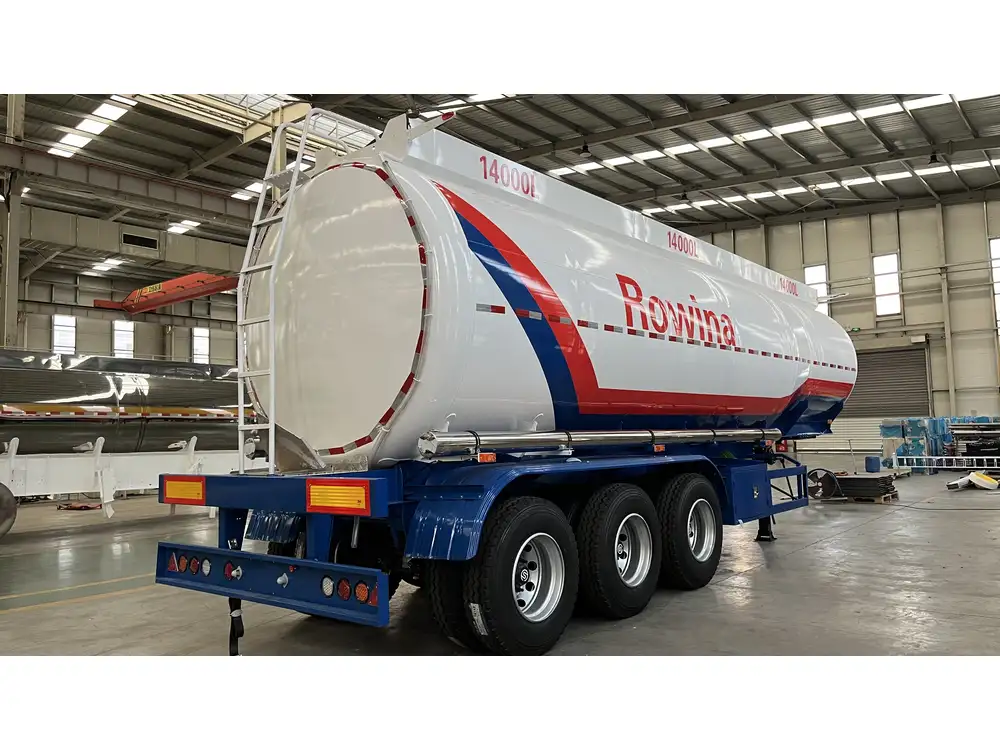
Compliance with Regulations
Adhering to national and international standards is integral to tractor trailer design.
National and International Standards
Key regulations include:
- Federal Motor Carrier Safety Administration (FMCSA) Standards: Govern dimensions, weight limits, and safety requirements in the United States.
- European Union Regulations: Establish similar standards for trailers operating within EU member states.
Emissions Regulations
Designs must comply with stringent emissions standards to minimize environmental impact:
- EPA Regulations: Mandate reductions in greenhouse gas emissions and fuel usage.
- EU Emissions Standards: Similarly focus on lowering pollutant outputs for trailers used in Europe.

Ergonomics and Driver Comfort
Optimizing the driver’s experience ensures safety and enhances operational efficiency.
Cabin Design
Ergonomic cabin designs feature:
- Adjustable Seating: Accommodate drivers of varying heights and preferences.
- Climate Control Systems: Maintain a comfortable environment regardless of external conditions.
Safety Features for Drivers
Incorporating elements such as:
- Anti-Fatigue Systems: Reduce driver stress and fatigue during long hauls.
- Emergency Assistance Systems: Provide quick access to help in case of accidents or breakdowns.
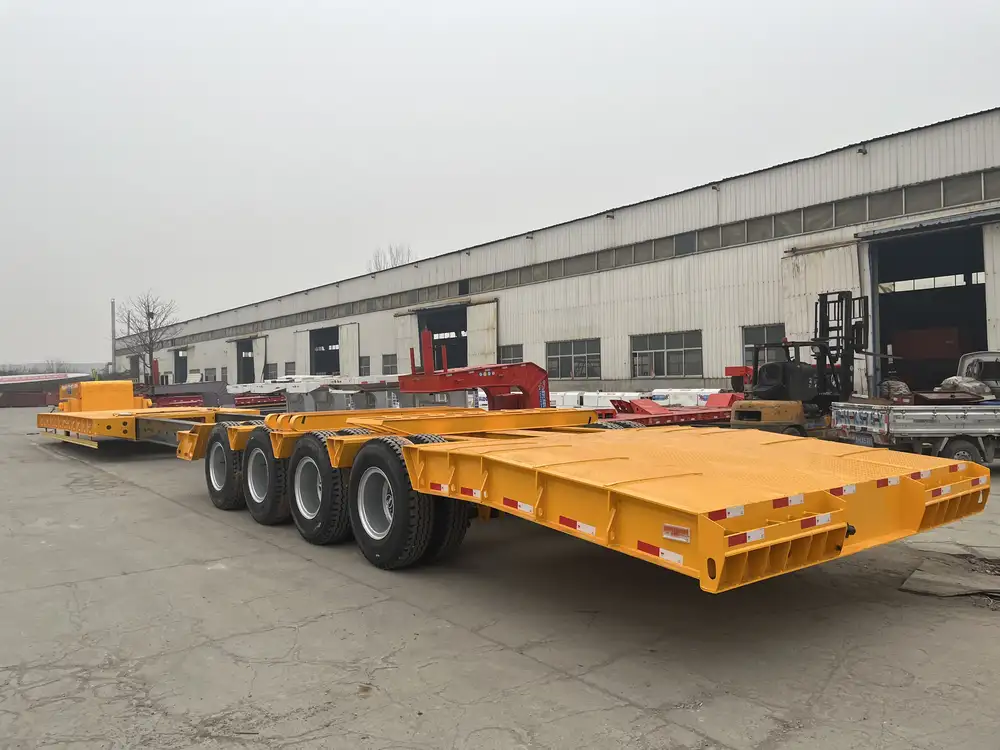
Sustainable Design Practices
Sustainability is a cornerstone of modern tractor trailer design, addressing environmental concerns through:
Eco-Friendly Materials
Utilizing materials that have a reduced environmental footprint, including:
- Recycled Metals: Lower the demand for new raw materials.
- Biodegradable Components: Enhance the recyclability of trailer parts.
Designing for Recyclability
Ensuring that trailer components can be easily disassembled and recycled at the end of their lifecycle:
- Modular Assemblies: Facilitate the separation of materials for recycling.
- Standardized Fasteners: Simplify the disassembly process.

Case Study: CarMax Trailer’s Innovative Design
At CarMax Trailer, our commitment to excellence is exemplified in our latest models, which incorporate several groundbreaking design features:
Model X-500: Aerodynamic Mastery
- Advanced Fairing Systems: Reduce drag by 15%, improving fuel efficiency.
- Integrated Tail Fins: Enhance stability and minimize air resistance.
Model Z-700: Smart Technology Integration
- Telematics Suite: Offers real-time tracking and performance analytics.
- Driver Assistance: Includes adaptive cruise control and collision detection systems.
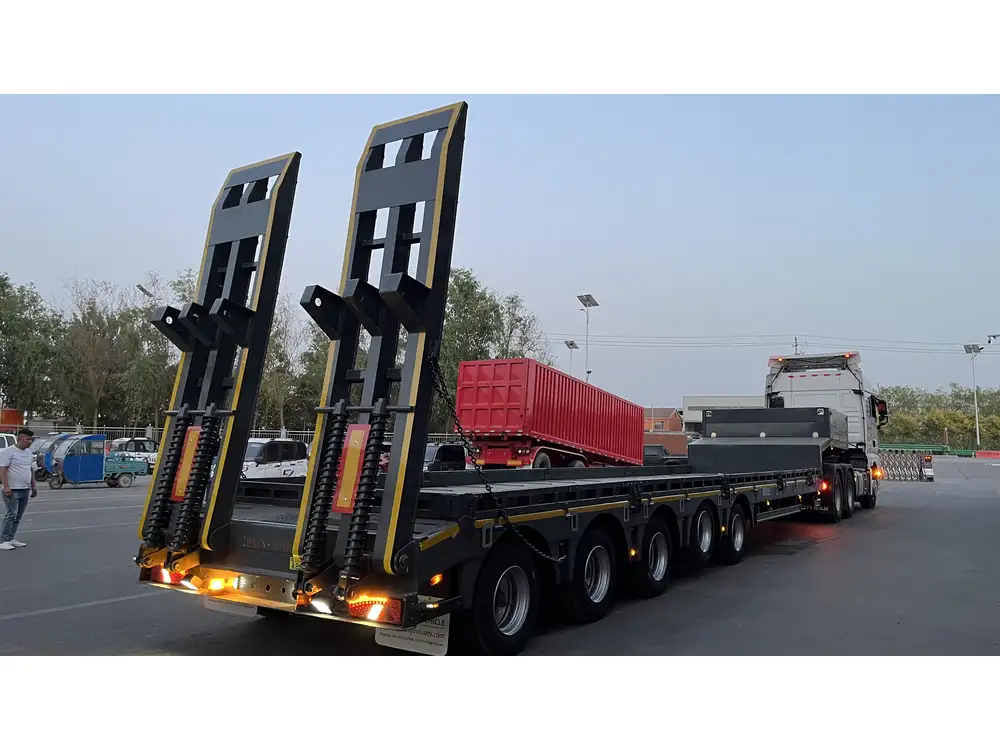
Model E-300: Sustainability Focus
- Eco-Materials: Constructed from 40% recycled aluminum.
- Energy-Efficient Components: Lower overall energy consumption during operations.
Future Trends in Tractor Trailer Design
The future of tractor trailer design is poised to embrace transformative technologies and innovative practices:
Automation and Autonomous Driving
Advancements in autonomous driving technology promise to revolutionize the industry by:
- Reducing Driver Fatigue: Automated systems handle routine driving tasks.
- Enhancing Safety: AI-driven systems can predict and respond to hazards more effectively than human drivers.

Integration with the Internet of Things (IoT)
IoT integration facilitates smarter operations through:
- Predictive Maintenance: Sensors monitor vehicle health and predict maintenance needs before failures occur.
- Enhanced Connectivity: Seamless communication between tractor and trailer systems optimizes performance in real-time.
Electrification of Tractor Trailers
The shift towards electric powertrains aims to:
- Lower Emissions: Electric motors produce zero tailpipe emissions.
- Improve Efficiency: Regenerative braking and energy-efficient designs enhance overall performance.
Conclusion
The design of tractor trailers is a complex interplay of engineering precision, innovative technologies, and sustainable practices. At CarMax Vehicle, we are dedicated to advancing tractor trailer design to meet the challenges of today and tomorrow. By prioritizing aerodynamics, safety, customization, and sustainability, we deliver solutions that empower businesses to achieve greater efficiency and reliability in their logistics operations.
Whether you’re seeking enhanced fuel efficiency, advanced safety features, or tailored configurations, CarMax Trailer stands at the forefront of the industry, ready to meet your specific needs with unparalleled expertise and commitment to quality.
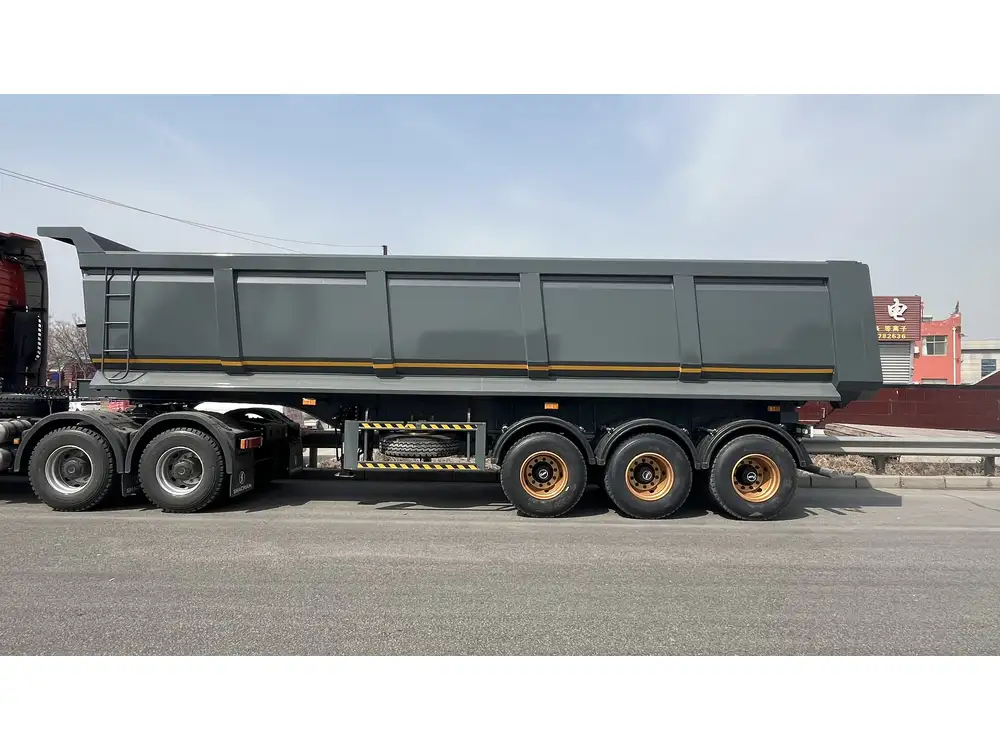
Frequently Asked Questions
1. What factors influence the fuel efficiency of a tractor trailer?
Fuel efficiency is influenced by several factors, including aerodynamic design, vehicle weight, engine performance, tire selection, and driving habits. Incorporating aerodynamic enhancements like side skirts and tail fins can significantly reduce drag, while using lightweight materials and optimizing engine performance contribute to better mileage.
2. How does modular design benefit tractor trailer operations?
Modular design offers flexibility by allowing components to be easily swapped or upgraded based on specific needs. This adaptability enables businesses to customize their trailers for different cargo types, simplify maintenance, and extend the lifespan of their vehicles by accommodating technological advancements without complete overhauls.

3. What are the latest safety technologies in tractor trailer design?
Recent advancements in safety technologies include adaptive cruise control, collision detection systems, electronic stability control, lane departure warnings, and advanced braking systems. These features work together to enhance driver safety, prevent accidents, and ensure safer transportation of goods.
4. How does CarMax Vehicle ensure compliance with international regulations?
CarMax Vehicle adheres to both national and international standards by implementing rigorous design and testing protocols. Our trailers are built to meet FMCSA standards in the United States and equivalent regulations in Europe and other regions, ensuring compliance with dimensions, weight limits, safety requirements, and emissions standards.
5. What sustainable practices are integrated into tractor trailer design?
Sustainable practices in our tractor trailer designs include the use of recycled and eco-friendly materials, energy-efficient components, and designs that facilitate easy recycling at the end of their lifecycle. Additionally, we focus on reducing emissions and optimizing fuel efficiency to minimize the environmental impact of our trailers.



